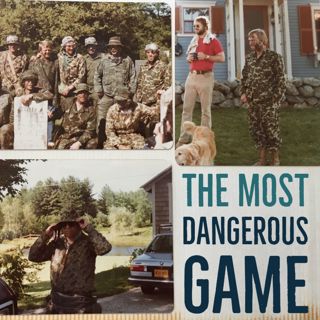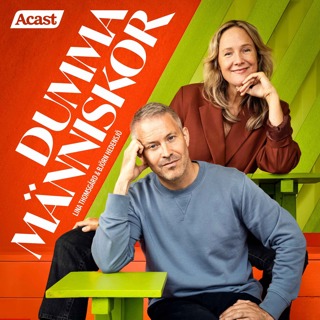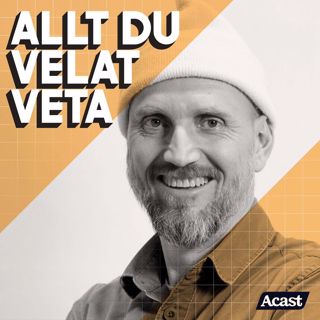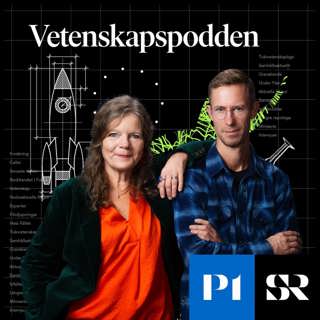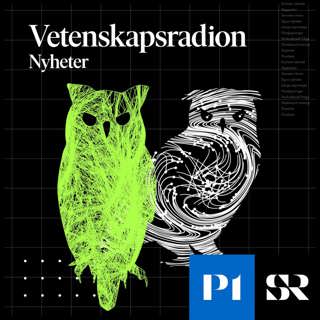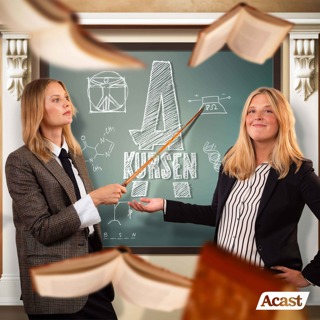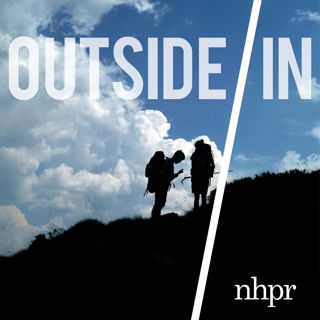
The $1,000 balloon
Helium is full of contradictions. It’s the second most abundant element in the universe, but is relatively rare on Earth. It’s non-reactive, totally inert—yet the most valuable helium isotope is sourced from thermonuclear warheads. And even though we treat it as a disposable gas, often for making funny voices and single-use party balloons, our global supply of helium will eventually run out. That’s because, at a rate of about 50 grams per second, this non-renewable resource is escaping the atmosphere for good. In this edition of The Element of Surprise, our occasional series about the hidden histories behind the periodic table’s most unassuming atoms, we examine the incredible properties and baffling economics of our most notable noble gas. Featuring Anjali Tripathi and William Halperin. SUPPORTOutside/In is made possible with listener support. Click here to become a sustaining member of Outside/In. Subscribe to our newsletter to get occasional emails about new show swag, call-outs for listener submissions, and other announcements. Follow Outside/In on Instagram or join our private discussion group on Facebook. LINKSRead John Paul Merkle’s petition arguing to change the name of helium to “helion.”Despite being about a quarter century old, this passage from “The Impact of Selling the Federal Helium Reserve” has a pretty comprehensive list of the uses and properties of helium.More on the recent sale of the Federal Helium Reserve (NBC News)Physicist William Halperin said the idea of mining helium-3 on the moon was… unlikely… but that hasn’t stopped this startup company from trying it. (Wired)Want to learn more about the weird history of American airships? Check out this film produced by the U.S. government in 1937, when they were still hoping to keep our airship program afloat. CREDITSHost: Nate HegyiReported, produced, and mixed by Taylor QuimbyEditing by Rebecca Lavoie, with help from Marina Henke and Justine ParadisOur staff includes Felix PoonExecutive producer: Taylor QuimbyRebecca Lavoie is NHPR’s Director of On-Demand Audio.Music by Blue Dot Sessions and Ryan James Carr.Outside/In is a production of New Hampshire Public RadioSubmit a question to the “Outside/Inbox.” We answer queries about the natural world, climate change, sustainability, and human evolution. You can send a voice memo to outsidein@nhpr.org or leave a message on our hotline, 1-844-GO-OTTER (844-466-8837). Hosted by Simplecast, an AdsWizz company. See pcm.adswizz.com for information about our collection and use of personal data for advertising.
5 Sep 202436min

Why we get scared—and why we like it
Jack Rodolico knows exactly what scares him. Sharks. But here’s what he doesn’t get: if he’s so freaked out, why can’t he stop incessantly watching online videos of bloody shark attacks? Why would he deliberately seek out the very thing that spooks him?To figure it out, Jack enlists the help of other scaredy-cats: our listeners, who shared their fears about nature with us. Together, Jack and the gang consider the spectrum of fear, from phobia to terror, and what it might mean when we don’t look away.Featuring Lauren Passell, Arash Javanbakht, Nile Carrethers, and Sushmitha Madaboosi.This episode originally aired in October 2022. SUPPORTOutside/In is made possible with listener support. Click here to become a sustaining member of Outside/In. Subscribe to our (free) newsletter for occasional merch drops and updates.Follow Outside/In on Instagram or Twitter, or join our private discussion group on Facebook. LINKSLauren Passell’s Podcast the Newsletter.Related: why people love horror movies.The ubiquity of smartphones means plenty of hair-raising amateur videos of shark attacks to get you started on your doomscrolling (warning: a couple of these are bloody).If this image of an octopus freaks you out, you might share Lauren’s “fear of holes,” or trypophobia.Learn more about augmented reality technology and other projects at Arash Javanbakht’s clinic. CREDITSHost: Nate HegyiReported and produced by Jack RodolicoMixed by Taylor QuimbyEdited by Taylor Quimby, with help from Justine Paradis, Felix Poon, Nate Hegy, and Jessica Hunt.Executive producer: Rebecca Lavoie Music for this episode by Silver Maple, Matt Large, Luella Gren, John Abbot and Blue Dot Sessions.Thanks to everyone who sent in voicemails and memos, even the ones we didn’t play: Erin Partridge, Lauren Passell, Nile Carrethers, Michelle MacKay, Alec from Nashville, and Hillary from Washington. Our theme music is by Breakmaster Cylinder.Outside/In is a production of New Hampshire Public Radio. Hosted by Simplecast, an AdsWizz company. See pcm.adswizz.com for information about our collection and use of personal data for advertising.
29 Aug 202435min

The not-so-secret life of plants
From the perspective of Western science, plants have long been considered unaware, passive life forms; essentially, rocks that happen to grow. But there’s something in the air in the world of plant science. New research suggests that plants are aware of the world around them to a far greater extent than previously understood. Plants may be able to sense acoustics, communicate with each other, and make choices… all this without a brain.These findings are fueling a debate, perhaps even a scientific revolution, which challenges our fundamental definitions of life, intelligence, and consciousness.Featuring Zoë Schlanger. SUPPORTOutside/In is made possible with listener support. Click here to become a sustaining member. Subscribe to our newsletter for occasional emails about new show swag, call-outs for listener submissions, and other announcements.Follow Outside/In on Instagram or Twitter, or join our private discussion group on Facebook. LINKSZoë Schlanger’s book is called The Light Eaters: How the Unseen World of Plant Intelligence Offers a New Understanding of Life on Earth. “Everything Will Be Vine” is a great podcast episode from Future Ecologies featuring Zoë’s journey into the Chilean rainforest, where researchers are mystified by a once-overlooked vine. Jagadish Chandra Bose was an Indian scientist who challenged the Western view of plants in the early 20th century. He studied electrical signaling in plants and argued that plants use language. Read about his life and work in Orion.This is the now famous study by David Rhoades. Rhoades was derided for his “talking trees” theory, and only was proved correct after his death. Here’s an audio story which goes deeper on Rhoades.Lilach Hadany, the scientist who likened a field of flowers to a “field of ears,” also recently found that plants produce sounds when stressed.The study which found that plants respond to the sound of caterpillars chewing, a collaboration between Rex Cocroft and Heidi Appel.The organization of the octopus nervous system is fascinating. CREDITSOutside/In host: Nate HegyiReported, produced, and mixed by Justine Paradis.Edited by Taylor QuimbyOur team also includes Felix Poon and Marina Henke.NHPR’s Director of Podcasts is Rebecca LavoieSpecial thanks to Rex Cocroft for sharing the recordings of leafhopper mating calls and chewing caterpillars. Music by Mochas, Hanna Lindgren, Alec Slayne, Sarah the Illstrumentalist, Brendan Moeller, Nul Tiel Records, Blue Dot Sessions, and Chris Zabriskie.Outside/In is a production of New Hampshire Public Radio. Hosted by Simplecast, an AdsWizz company. See pcm.adswizz.com for information about our collection and use of personal data for advertising.
22 Aug 202435min

This is your brain on GPS
GPS is essential these days. We use it for everything – from a hunter figuring out where the heck they are in the backcountry, to a delivery truck finding a grocery store, to keeping clocks in sync.But our reliance on GPS may also be changing our brains. Old school navigation strengthens the hippocampus, and multiple studies suggest that our new reliance on satellite navigation may put us at higher risk for diseases like dementia. In this episode, we map out how GPS took over our world – from Sputnik’s doppler effect, to the airplane crash that led to its widespread adoption – and share everyday stories of getting lost and found again. Featuring: Dana Goward, M.R. O’Connor, Christina Phillips, Michelle Liu, Julia Furukawa, and Taylor Quimby SUPPORTOutside/In is made possible with listener support. Click here to become a sustaining member of Outside/In. Follow Outside/In on Instagram or join our private discussion group on Facebook. LINKSIn 2023, Google Maps rerouted dozens of drivers in Los Angeles down a dirt road to the middle of nowhere to avoid a dust storm. Maura O’Connor traveled from rural Alaska to the Australian bush to better understand how people navigate without GPS – and sometimes even maps. Here’s the peer-reviewed study, published in the journal Nature, that found that young people who relied on GPS for daily driving had poorer spatial memories. Another study, out of Japan, found that people who use smartphone apps like Google Maps to get around had a tougher time retracing their steps or remembering how they got to a place compared to people who use paper maps or landmarks. CREDITSHost: Nate HegyiReported and produced by Nate HegyiEdited by Taylor Quimby and Katie Colaneri Our team includes Marina Henke, Justine Paradis, and Felix PoonRebecca Lavoie is our Executive ProducerMusic for this episode by Blue Dot SessionsOutside/In is a production of New Hampshire Public Radio Hosted by Simplecast, an AdsWizz company. See pcm.adswizz.com for information about our collection and use of personal data for advertising.
15 Aug 202428min

The fifth sense
Once again, it’s that wonderful time when scientists everywhere hold their breath as the team opens the Outside/Inbox to answer listener questions about the natural world. Today’s theme is smell: how it works in the nose, the mind, and how much is still unknown about the fifth sense.Question 1: Does it gross you out to know that every time you smell something, a little bit of that thing… is in your nose? What happens to the molecules we smell?Question 2: Why do smells have such a powerful connection to memory?Question 3: How do pheromones work in humans? Do ‘ideal mates’ really ‘smell better’ to us?Question 4: Why does the smell of florals sometimes precede a migraine?Question 5: What’s anosmia?Featuring Rachel Herz, Bob Datta, Katie Boetang, and Tristram Wyatt, with thanks to Stephanie Hunter. Outside/In seeks your questions for an upcoming Outside/Inbox. What questions should the Outside/In team explore about the U.S. presidential election? What do you want to know about what this election means for climate change or environmental regulation? Maybe you’ve got questions about Project 2025, or maybe you’re curious about presidential transitions more generally.You can send your questions to outsidein@nhpr.org or leave a voicemail on our hotline, 1-844-GO-OTTER. SUPPORTOutside/In is made possible with listener support. Click here to become a sustaining member. Subscribe to our newsletter for occasional emails about new show swag, call-outs for listener submissions, and other announcements.Follow Outside/In on Instagram or Twitter, or join our private discussion group on Facebook. LINKSRachel Herz is the author of several books, including “Why You Eat What You Eat” and “The Scent of Desire.”Tristram Wyatt is the author of “Pheromones and Animal Behavior.”Katie Boetang hosts The Smell Podcast.More on the connections between smell, memory, emotion, and health, featuring Bob Datta and Herz.In the 1990s, one company claimed to have found human sex pheromones and tried to market them for use in perfumes.Research on the connection between olfactory loss and depression, smell triggers for migraines, and an explanation of how COVID-19 causes loss of smell. CREDITSOutside/In host: Nate HegyiReported, produced, and mixed by Justine Paradis, Catherine Hurley, and Felix Poon, with help from Marina Henke.Edited by Taylor QuimbyNHPR’s Director of Podcasts is Rebecca LavoieMusic by Daniel Fridell, Caro Luna, Lofive, bomull, Jahzarr, Mindme, and John B. Lund. Outside/In is a production of New Hampshire Public Radio. Hosted by Simplecast, an AdsWizz company. See pcm.adswizz.com for information about our collection and use of personal data for advertising.
8 Aug 202430min

Saving the tallest trees on Earth
Redwood National and State Parks are home to giants: coast redwoods that can grow as tall as a thirty-story building. These ancient California forests support hundreds of different species, and store more carbon than any other forest on the planet. But in the last century, 95% of them were felled by loggers. Now, scientists have discovered a surprising strategy to foster the next generation of old-growth redwoods… and it involves chopping some of the younger trees down.This week’s episode comes to us from “THE WILD with Chris Morgan,” produced by our friends at KUOW. Chris has got an infectious enthusiasm for the natural world, and the podcast has an immersive sound that makes it feel like you’re standing right under the redwoods with him. LINKSCheck out more episodes of THE WILD at https://www.kuow.org/podcasts/thewild SUPPORTOutside/In is made possible with listener support. Click here to become a sustaining member of Outside/In. Follow Outside/In on Instagram or join our private discussion group on Facebook. THE WILD CREDITSTHE WILD is a production of KUOW and Chris Morgan Wildlife, with support from Wildlife Media. It is produced by Matt Martin and Lucy Soucek. It is edited by Jim Gates. It is hosted, produced and written by Chris Morgan. Fact checking by Apryle Craig. Theme music is by Michael Parker. OUTSIDE/IN CREDITSOutside/In Host: Nate HegyiExecutive producer: Taylor QuimbyNHPR’s Director of On-Demand Audio is Rebecca LavoieOur staff includes Justine Paradis, Felix Poon, and Marina Henke. Our intern is Catherine Hurley. Outside/In is a production of New Hampshire Public RadioSubmit a question to the “Outside/Inbox.” We answer queries about the natural world, climate change, sustainability, and human evolution. You can send a voice memo to outsidein@nhpr.org or leave a message on our hotline, 1-844-GO-OTTER (844-466-8837). Hosted by Simplecast, an AdsWizz company. See pcm.adswizz.com for information about our collection and use of personal data for advertising.
1 Aug 202439min

Hot Olympic Summer: Is Paris Greenwashing the Games?
Will Simone Biles live up to her moniker as greatest gymnast of all time? Will Lebron James and Team USA continue to dominate men's basketball? And will the Paris 2024 Games be the most sustainable in modern Olympic history?While billions of viewers tune in for the drama of athletes competing on a global stage, climate scientists are tuning in to Paris's climate promises – from the locally sourced catering and carbon neutral Olympic cauldron, to head-scratching “solutions” like a sidewalk made of seashells, and not installing air conditioning in athletes’ housing.Are these solutions making a difference? Or is it plain and simple greenwashing? We put these questions to the test in this episode on the XXXIII Olympiad. Let the games begin!Featuring Martin Müller. SUPPORTOutside/In is made possible with listener support. Click here to become a sustaining member of Outside/In. Subscribe to our newsletter (it’s free!).Follow Outside/In on Instagram or join our private discussion group on Facebook. LINKSRead Martin Muller’s paper evaluating the sustainability of summer and winter Olympic games from the past 3 decades.Listen to Civics 101’s episode on the politics of the Olympic Games.Check out scenes from Olympic opening ceremonies from London 1908 to Rio 2016.Watch a timelapse video of construction of the temporary beach volleyball venue in front of the Eiffel Tower.Read up on fun Olympics trivia, like what the most common surname of athletes is, and about the time two athletes who tied for second place cut their silver and bronze medals and fused them together to make two “friendship medals.” CREDITSHost: Nate HegyiReported, produced, and mixed by Felix PoonEditing by Taylor Quimby.Our staff includes Justine Paradis and Marina Henke.Our intern is Catherine Hurley.Our Executive producer is Taylor Quimby.Rebecca Lavoie is NHPR's Director of On-Demand Audio.Music by Blue Dot Sessions, Joe E. Lee, Jay Varton, Arthur Benson, Philip Ayers, Kikoru, Trabant 33, and Phoenix Tail.Our theme music is by Breakmaster Cylinder.Outside/In is a production of New Hampshire Public RadioSubmit a question to the “Outside/Inbox.” We answer queries about the natural world, climate change, sustainability, and human evolution. You can send a voice memo to outsidein@nhpr.org or leave a message on our hotline, 1-844-GO-OTTER (844-466-8837). Hosted by Simplecast, an AdsWizz company. See pcm.adswizz.com for information about our collection and use of personal data for advertising.
25 Juli 202426min

Every bite is a story
You might not think much about the sticky bottle of vanilla sitting in the back of your pantry. But that flavor – one of the most common in the world – has a fascinating history, involving a fickle orchid and a 12-year-old enslaved boy who made the discovery of a lifetime. That’s the sort of tale that attracts poet Aimee Nezhukumatathil. From peacock feathers to the sounds of garden insects, her work is known for magnifying the wonders of the natural world. Her latest book of essays, “Bite by Bite: Nourishments and Jamborees,” explores the unexpected connections between food, memory, and community.So take a seat and pour yourself an aperitif, as Aimee Nezhukumatathil shares a few of these miniature morsels with Outside/In host Nate Hegyi: a three-course meal of grape jelly, sweet nostalgia, and just a hint of vanilla bean. Featuring Aimee Nezhukumatathil SUPPORTOutside/In is made possible with listener support. Click here to become a sustaining member of Outside/In. Follow Outside/In on Instagram or join our private discussion group on Facebook. CREDITSHost: Nate HegyiReported, produced, and mixed by Nate HegyiEditing by Taylor QuimbyOur staff includes Justine Paradis, Marina Henke, Felix Poon and Catherine HurleyExecutive producer: Taylor QuimbyRebecca Lavoie is NHPR’s Director of On-Demand AudioMusic by Blue Dot SessionsOur theme music is by Breakmaster Cylinder.Outside/In is a production of New Hampshire Public RadioSubmit a question to the “Outside/Inbox.” We answer queries about the natural world, climate change, sustainability, and human evolution. You can send a voice memo to outsidein@nhpr.org or leave a message on our hotline, 1-844-GO-OTTER (844-466-8837). Hosted by Simplecast, an AdsWizz company. See pcm.adswizz.com for information about our collection and use of personal data for advertising.
18 Juli 202425min
